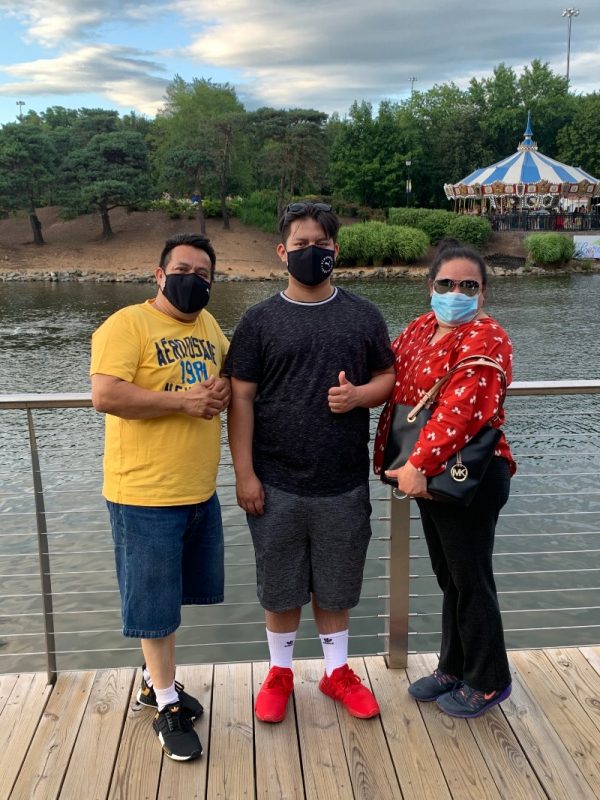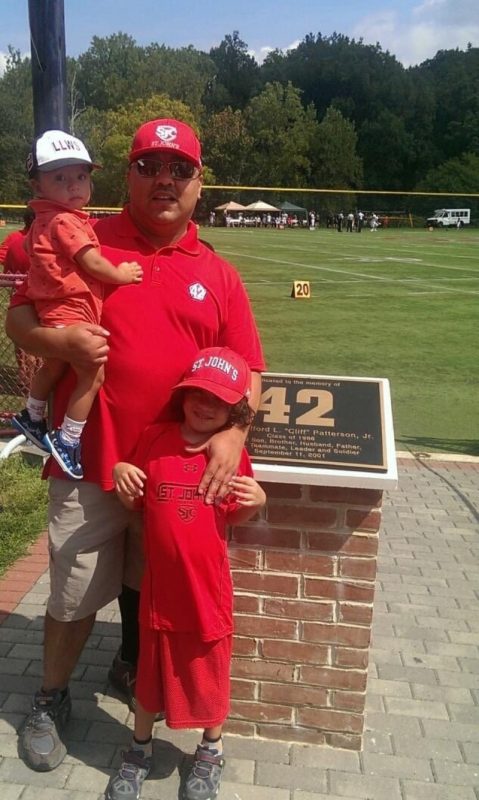By Milagros Meléndez | On the morning of September 11, 2001, Guatemalan Luis Fernando Espina was working at the Pentagon, remodeling offices, when he suddenly heard a thunderous noise and the activation of alarms, followed by a screaming voice. “Everyone to the Center!”
“There was a lot of confusion. I didn’t know what was happening and they asked us to go to the center of the Pentagon, ”Espina recalled to El Tiempo Latino.
The images that remain in his memory are the faces of despair and wounded, bloody people, some without pieces of skin.
“I do not forget that, I saw people with blood, with raw skin. It is something that is always in the memory, “said Espina.
This Saturday the 11th, the nation and the world remember the terrorist attacks of September 11, when a group of men from the Al-Qaeda network hijacked four commercial planes and crashed them into the twin towers of the World Trade Center and the Pentagon. The fourth ship – which would be directed to the Capitol – fell in Pennsylvania.
Hispanics from the Washington area who were there on that date describe the horror of the attacks, which marked a before and after in the United States. Until then, Espina, who had arrived at the Pentagon very early, had no idea what was happening .
“At first, I thought it was a pipe that had exploded, but when I saw so many people injured, I knew it was something else, but I could not imagine everything that had happened,” he said.
The Pentagon crowd gathered in the parking lot. Later, Espina learned of the tragic news.
American Airlines Flight 77 with 189 people on board, including the terrorists, hit the west side of the Pentagon at 9:39 am.
It was the third hijacked plane. He had departed from Dulles Airport in Virginia.
Almost an hour earlier, at 8:46 am American Airlines Flight 11 struck the North Tower of the World Trade Center.
At 9:02 am the United States learned it was under attack. United Flight 175 struck the South Tower of the World Trade Center. The horror was broadcast live by various television cameras that focused on the Twin Towers due to the dense smoke that arose from the first impact.
IMPACT. Luis Fernando Espina was working at the Pentagon when Flight 77 hit the building / MILAGROS MELÉNDEZ
Firefighter
That morning, firefighter Juan David Campodónico, who was new to the Fairfax, Virginia Fire Department, had finished his duty round. “I got home and had not turned on the television when I received the call from my superiors telling me to return to the station,” he said.
Arriving at the station, the attack on the Pentagon occurred. “There was no longer any doubt that it was a terrorist attack,” he said. “I had to stay assisting the emergency calls and my colleagues left in groups for the Pentagon,” he recalled.
That day Campodónico worked 36 hours straight. “During the following days, calls for anxiety attacks and traumatic situations increased,” said the Peruvian, a Virginia resident for three decades.
Ambulances with wounded at home
Colombian Rosalía Fajardo was at a medical appointment in Arlington, very close to the Pentagon, when she felt the explosion. “There was a loud noise, we left immediately, everything was a confusion. I got to my house and watched as ambulances passed by to the hospital a few miles from where I lived, “he said.
Like millions, Fajardo followed the images of terror on television and recalled the time when she, as a lawyer in her country, had experienced terrorism. “I got rid of an attack and asked this country for asylum,” he said.
He did not resist and moved from New York to Miami
Marina López, who was two months pregnant at the time, lived in New York. That morning he was working in a factory 25 minutes from downtown, when he was notified of the explosion. “They sent us home and it was all chaos,” he said.
Seeing the shocking images of people jumping from the top of the building before burning deeply penetrated her. “I couldn’t get over it. I cried all the time and it gave me a great depression, “he said.
The emotional and physical impact was so strong that Lopez was considered a high-risk pregnancy. “I was threatened with an abortion, so the doctors recommended that I stay in bed for the last few months or not make any kind of effort.”
Her husband Antonio was concerned about the residues of the explosion in the environment. “That’s why we decided to move here,” he said. The family lives in Arlington. Today her son Anthony is 19 years old.

TRAUMA. Marina López lived in New York, and was pregnant. He could not bear the post traumatic trauma and moved to Virginia. In the photo with her husband Antonio and their son Anthony / Courtesy
After capturing images
The Peruvian photojournalist Rafael Crisóstomo, was that morning doing a coverage for the publication of the Archdiocese of Washington. “I was up on a ladder taking photos of the dome of San Mateo Cathedral, when I heard the sirens and saw the patrols go by,” he recalled.
Within minutes, his daughter, who worked in the United States Navy, informed him of the attacks. “She worriedly warned me to stay away from the White House and federal buildings, but my journalistic instincts led me to the opposite,” he said. The Cathedral is about ten blocks from the White House, so without thinking twice, he headed there.
Chrysostom describes the road to the White House as chaos.
“People were desperate running, some threw themselves to the ground, and the cars were stagnant. They weren’t moving, ”he recalled.
Upon arriving at Lafayette Park in front of the White House, security was extreme. “You really didn’t know what was going on. Until then, the two twin towers had already impacted and it was thought that a plane was coming bound for the White House, ”he said.
With adrenaline running high, Chrysostom expected the worst, but without fear of death. “I was spread out, lying on the ground, waiting for the moment, but I didn’t know exactly what for,” he said.
While he was on the ground, at 9:37 a.m. he felt the plane hit the Pentagon. “But it didn’t feel like a strong explosion, it felt like an expansive slingshot,” he recalled.
I wanted to go to the Pentagon, but the bridge was blocked.
Lost his friend
Among the 189 victims of the Pentagon was Major Clifford Patterson.
Montgomery, Maryland-based activist Luis Cardona had studied and played with him during school. “It was shocking to learn that he was among one of the victims,” she said, remembering Patterson, who was affectionately called “Cliff.”
Cardona and Cliff were high school classmates at Saint Johns Catholic School. “We belonged to Class 86.”
“He was a person with many values. A good human being who died serving his country ”, he said and recalled. “He always gave me good advice.”
Patterson’s death joined the school’s 86th class. Cardona along with his other colleagues promoted the creation of a scholarship for $ 50 thousand in memory of Patterson, to give financial assistance to Saint Johns students, who participate in the military program and also play sports.
Members of Class 86 also placed a bronze plaque on Patterson’s grave in Arlington National Cemetery. The plate has the Number 42, which was the jersey he played with on the soccer team.
In total, the September 11 attacks claimed the lives of 2,996 people, including those from the fourth hijacked plane that crashed in Pennsylvania without reaching its target, the Capitol.
United Airlines Flight 93 crashed into an open area after passengers fought terrorists. 37 people were killed, including the four kidnappers.

LOST. Activist Luis Cardona lost his schoolmate, Major Clifford Patterson, in the attack on the Pentagon./Courtesy
eltiempolatino.com